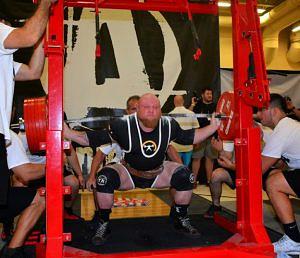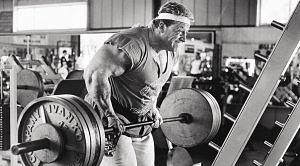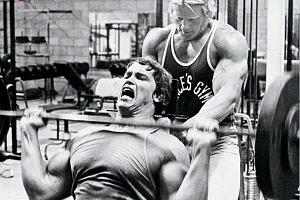- Every set must be balls to the walls, hell for leather.
- Every set must be stopped with plenty of reps in the tank, nowhere near failure.
Types Of Failure
- Mechanical failure. This is when you can no longer physically move the weight, your form goes to sh*t and the weight starts falling back on you. You never want to do this.
- Technical Failure. This is the point at which another rep with perfect form would be impossible. This is acceptable, and has its place. But even then I feel it’s often abused a little too much for my liking.
Knowing you can do one more solid rep is always a good feeling, and builds confidence during a training cycle; increasing the likelihood of setting PRs by the end of it.
What Exercises Should You Train To Failure With
Exercises I Advise AGAINST Going To Failure On:
- Anything in the 1-5 rep range
When you look at all the best powerlifters and strength athletes over time, and the most comprehensive programs out there, you’ll see they all recommend training at 90%.

- Big barbell lifts you’re still learning
- Anything that heavily involves the lower back

Exercises That You CAN Go To Failure On:
- Dumbbell and bodyweight exercises you’re doing for 8 reps or more
- Single joint exercises like leg extensions, leg curls, biceps curls
- Barbell presses of which you’ve mastered technique on, and done for 8 reps or more
But Isn't Training To Failure Necessary For Size And Strength?
All sets to failure | 100kg | 8,6,5 | 1900kg
Only last set to failure | 95kg | 8,8,7 | 2185kg
Training To Failure And Workout ‘Hangover’
For more information on this, strength coach Paul Carter has written in detail different ways to avoid this here.
Individuality Of Training To Failure
If you find your recovery is sub-par, you’re exhausted, your libido has diminished (a very good indicator for recovery), and your progression on exercises isn’t where it should be, I would skip failure sets altogether, and use it sparingly.
Using Phases Of Training To Failure TO Learn Your Body
This isn’t to be done to intentionally mess you up, but to teach you what failure is, how hard you can push, and what it feels like to push too far.
I feel this is an important rite of passage every serious trainee must go through to be able to learn how to train smart.
If you’ve never trained really hard, how do you know what smart is?
Incorporating Training To Failure Strategically
That is, unless you’ve got joints of steel and a super robust immune system that nothing breaks you down. In which case, failure training will be great for you!

For example: Squat – 4 sets of 6-8
Workout | Load | Reps Achieved
1 | 100kg | 8,8,8,8
2 | 102.5kg | 8,7,7,6
3 | 102.5kg | 8,8,7,7
4 | 105kg 2 sets, 102.5kg 2 sets | 7,6,8,7
5 | 105kg | 7,7,7,6
6 | 105kg | 8,7,7,6
7 | 105kg, 100kg | Max Reps, Rest 5 mins, Max Reps
8 | Deload
This is something I’ve learnt from powerlifting, where in the pursuit of strength, their motto is ‘build, build, build, test’. For body composition gains, you just tweak the repetition brackets to better suit muscle growth.
This occasional and planned ‘test’ week also serves as a good way to measure progress of your program and see where you stand on your key indicator lifts; as well as tickling any high intensity, low volume itch you may have.
Conclusion
The people who make the best progress on any program are those who train the hardest on it. If that means they go to failure too often and need reigning back every so often, then so be it.
But what if we could teach these clients how to train hard but also smart? And how to utilise failure principles within a strategic plan where they get the best of both worlds, and get even better results?
That’s the client I want!

.png)

